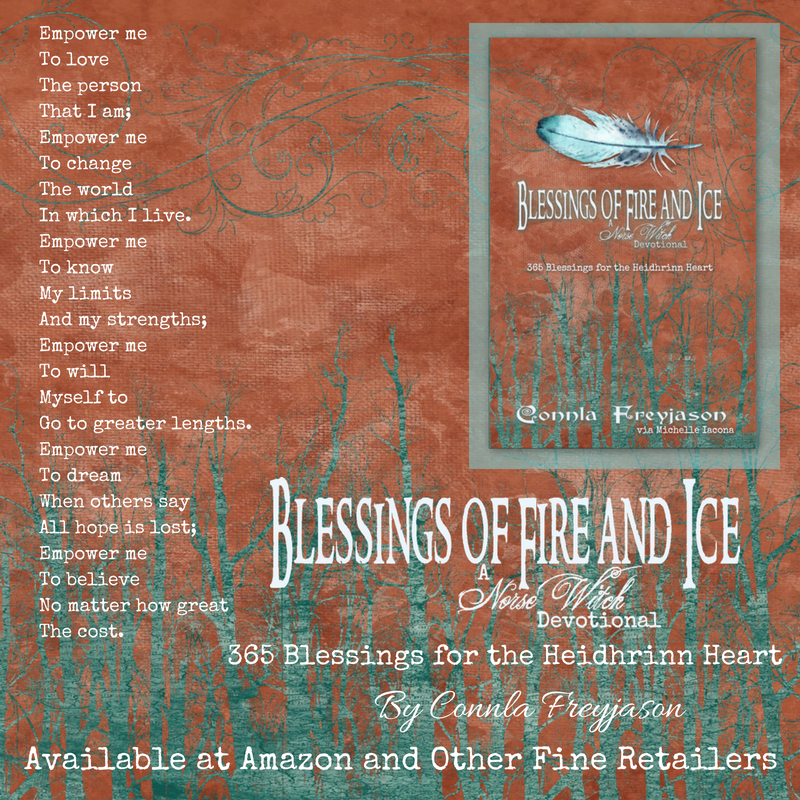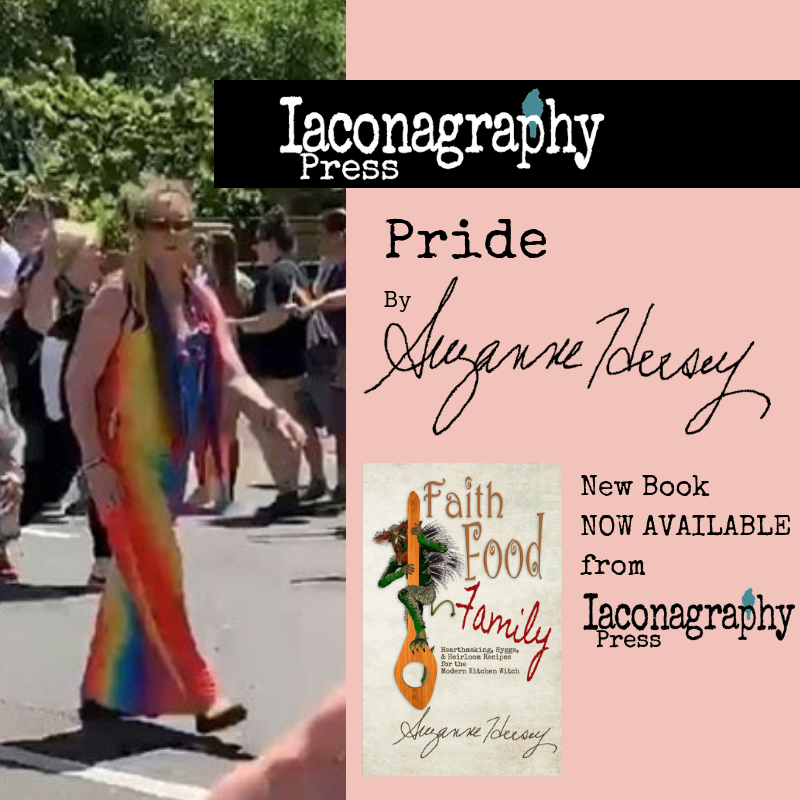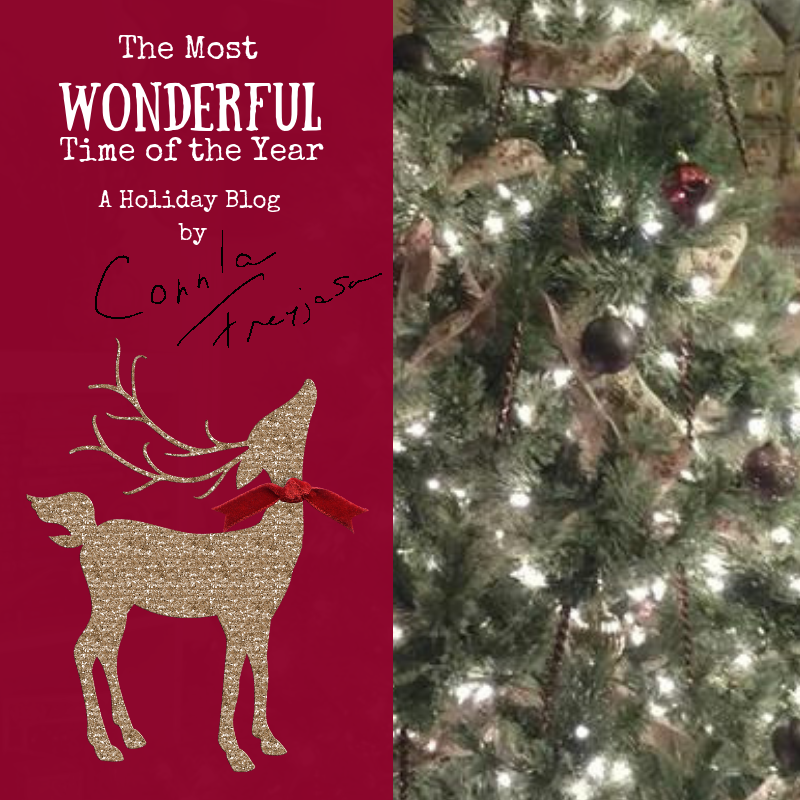The Unexpected Holiday

My latest book, Blessings of Fire and Ice: A Norse Witch Devotional, released this week from Iaconagraphy Press, yet at a time when I should be positively bursting at the seams from excitement, I am instead finding myself at the bottom of a throat-gulping pit of dread. Why? Because of an oversight in the book’s introduction that I am unfortunately unable to fix. Said oversight involves what I like to refer to as the “Unexpected Holiday”: Vanirblot.
Vanirblot is, admittedly, the name I coined for the apparent festival day (celebrated by at least some of our Norse Ancestors) which coincides with the modern Pagan celebration of Beltaine. I coined the term because the archaeological evidence at Hulje, Sweden paints a very definitive picture of a feast/festival day which celebrated Freyr and Freyja specifically. What was that archaeological evidence? Horse sacrifices (definitively associated with Freyr) and offerings of flax (most often associated with Freyja). I firmly believe that we can learn far more from the archaeological record than from maintaining a tunnel-vision-type study of the written lore. The archaeological record, after all, is actually contemporary to what people were practicing: it opens a window into the actual lives of the Ancestors. Meanwhile, everything in the written lore dates from a period long after those people’s lives were over: it’s second-hand information, not a primary source.
The archaeological record also provides ample proof for observances at Midsummer, and suggests a definite understanding of solstices and equinoxes by our Ancestors. Yet, when you start throwing all of these terms around in modern Heathen circles, you might as well spread your arms and pose for your upcoming crucifixion, because the written lore–a secondary source, remember–doesn’t tell us any of that!
Hence the pit of dread in which I’ve been living for the past couple of weeks, as opposed to exuberant excitement over the release of my new book. The truth is, even if I had included the archaeological information in this book, as opposed to waiting to include it in my next book, The Wheel of Ice and Fire (which is what I actually did), personal experience from my first book has proven that its inclusion likely wouldn’t matter in the least. When faced with looking at information in entirely new ways–especially when those new ways include not regarding the written lore as some sort of “Heathen Bible”–people have a tendency to just stop reading your book before they even get to the halfway point, and then post an ugly review on Amazon to attempt to kill your sales (for the record: it didn’t!). They never make it to the bibliography, nor work to check your sources; they just do their utmost best to shut you down.
The truth is, these exact same behaviors have been happening in the Christian community for centuries, dating all the way back to the Greek Gnostics, and trickling down through history to the Knights Templar, and even into the modern period. The ideals of biblical inerrancy lead Christians to “hang out to dry” any author, theologian, or lay-person who comes along and challenges that status quo, even when said challenges are based on real scholarship, inclusive of the archaeological record. Newsflash: we are not Christians! The written lore is not inerrant; it is, as I said, a secondary source, not a primary one. And it is, in fact, precisely this sort of behavior that led many of us, including myself, to leave that “Christian fold” in the first place!
Which brings me to the much deeper issue, and my entire purpose for writing this blog post: I should not be required to live in a place of dread, when my scholarship is sound, nor should any of us! As a community, we must lay down the antiquated notion that the written lore is a primary source, for it is not! Such a corpus of collected, homogenized beliefs did not exist during that Viking Era which most people have decided is the pinnacle of the basis of our practice, and that Viking Age might indeed be the pinnacle, but it is actually only a very small slice of the lives of our Ancestors. History should not enchain our practice; it should ignite it!
A week ago, I stood in a room full of artifacts dating from the 6th through the 10th century, all collected from the grave-field at Valsgärde (a burial site north of Uppsala, Sweden). There was, naturally, that rush of “look, I can learn new stuff!”, as I rushed about reading text from the curators on walls and accompanying artifacts. But more than that, there was this solemn understanding of “this is who we really are“. Not were; are. Our Ancestors do not reach out to us from the past, through their artifacts and material culture, to say “you must do exactly what we did”; on the contrary, their message is a loud and clear “we explored; we adapted: so should you!” For that is the true “Viking Spirit”, if there remains such a thing. Honed in the Vendel Period (from which most of these artifacts incidentally hailed), that was the spirit that led to worldwide expansion, even reaching so far as our North American shores. That was the spirit that maintained Heathen and Christian worship peacefully side by side, as evidenced on coins discovered in York in England (which were not a part of this exhibition; I encourage google). That is the spirit that led our Ancestors to bring home Buddhas from Asia (also not from the Valsgärde find; likewise, google) and venerate them right alongside images of Freyr and Thor: some of the first evidences of multi-culturalism. That is the spirit, ultimately, of this faith we practice and write about and supposedly attempt to live.
That is the spirit with which I attempt to infuse everything I do and write and teach. That is the spirit which infuses my latest book, Blessings of Fire and Ice. And that is the spirit which I will continue to carry in my heart and carry forward with me, even years after the memory of standing amidst those Valsgärde finds fades. For that is the spirit which will enable our faith to continue to survive and grow and thrive. Hail to all of you, who are likewise ablaze with that spirit! Shine on! And let no one and nothing dull your flame, not even the Edda-thumpers!



